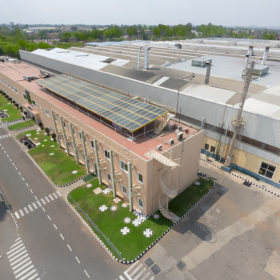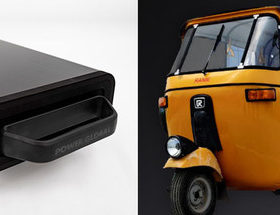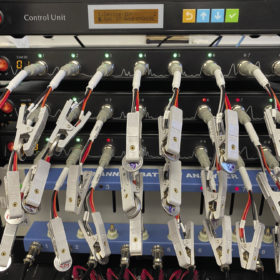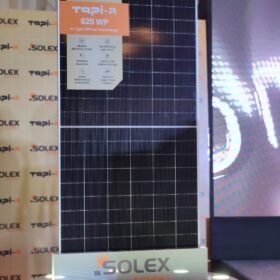Magenta to invest US$33.6 million in Tamil Nadu
The company will invest INR 250 crore for the R&D and manufacturing of cutting-edge technologies in the e-mobility segment.
TVS Motor commits US$161.2 million of electric vehicle investment in Tamil Nadu
The company has signed a memorandum of understanding with the state government to invest INR 1,200 crore for the design, development and manufacturing of new products and capacity expansion in the electric vehicles space.
Power Global lithium batteries to drive Rap Eco Motors’ 50,000 EVs
The US-based startup, which has a battery production plant in Greater Noida, has landed a deal to supply its swappable lithium-ion battery technology to Hyderabad-based Rap Eco Motors.
Tata Power crosses 1,000 EV charging stations milestone
Tata Power has become India’s largest electric vehicle (EV) charging solutions provider with the deployment of over 1,000 EV charging stations in the public domain.
Enabling the transition to electric mobility
Parity in the total cost of ownership already exists for electric two-wheelers and three-wheelers (with subsidy) vis-à-vis their internal combustion engine counterparts. Policy impetus, coupled with the production-linked incentive (PLI) scheme for batteries and auto components (exclusively covering EVs), is likely to further reduce costs and accelerate the transition to electric vehicles (EVs). The transition will also open up the market for new-age companies and innovators across the value chain.
Supply shortages likely to hit utility energy storage as EV demand grows, IHS Markit says
Cell manufacturers are expected to prioritize larger customers in the automotive industry over relatively small energy storage system integrators.
Hyderabad startup plans EV chargers at 4,000+ locations by 2025
SmartChargEV plans to set up electric vehicle charging facilities at 4,000+ locations in all the States and union territories of India by 2025, and 23,000+ locations by 2031.
The long read: The untapped potential of hybrid EVs
The electric vehicle conversation is dominated by all-electric options, and sales figures back up the shift from the age of the Prius to the age of Tesla. However, the timeline for the Global South is very different and hybrid EVs are better than ever. Hybrid EVs shouldn’t be considered a legacy technology, and may be greatly significant for their role in the path to decarbonization, explains Gautham Ram, assistant professor at TU Delft.
Mapping the future of cleaner transportation
Eight key developments are accelerating the advancement of electric vehicles. These range from the improvements in cost and performance of electric vehicle (EV) batteries to hydrogen-powered vehicles.
The long read: Battery material concerns
Shouldn’t we all be driving in affordable electric cars with 800-plus kilometers of driving range by now? Surely yes, according to many of the announcements coming from battery scientists over the past decade. Yet for all the scientific breakthroughs, few in fact “break through” into commercial applications. Christian Kuss of the University of Manitoba makes the case for a holistic approach to battery materials development, and reminds us to look beyond the stars of the show and consider their interactions with the auxiliary materials that hold the whole thing together.













